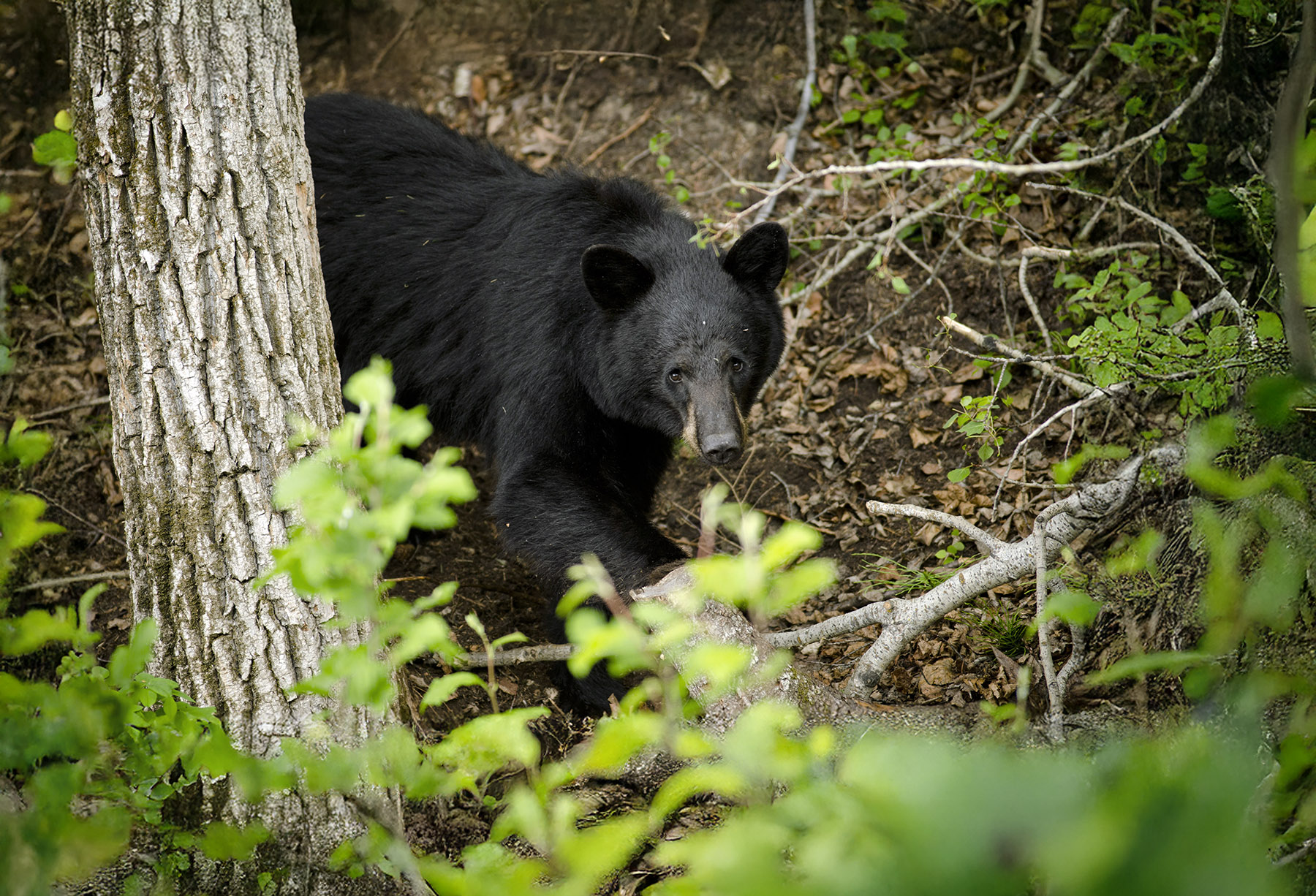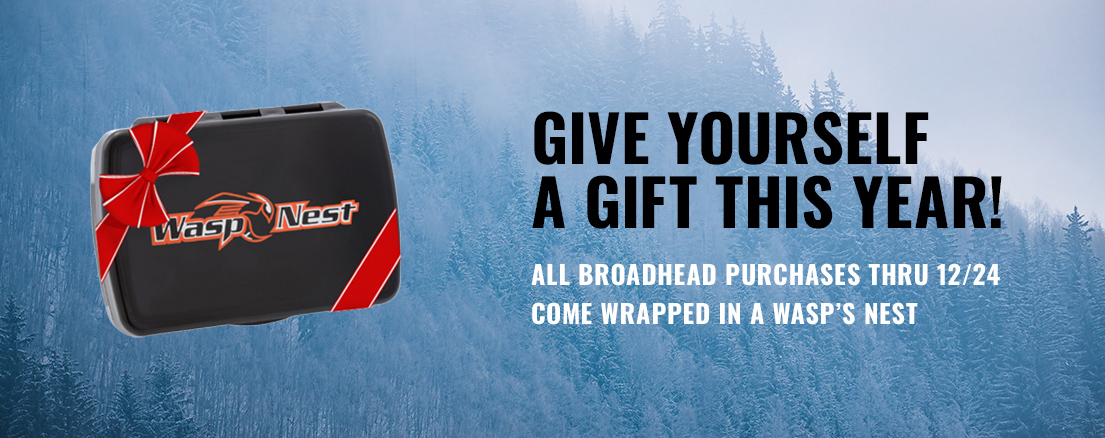Bowhunting Tactics and Tips for Spring Black Bears
Whether over bait or on foot, getting within bow range of these apex predators is one of the most thrilling big game experiences out there
Dusk slowly envelops the Northwoods timber. A raven caws from its roost, and a glance at your watch shows just five minutes of shooting light remain. That’s when a large, dark form emerges from the bush, without a sound. It’s a bear, and a big one. Your heart rate spikes.
Slowly, the boar slinks toward the bait barrel, settles in, and begins munching on a mixture of stale oats and gummy bears. He turns broadside and you draw, doing your best to steady your bow and pick a spot behind the bear’s shoulder. Your lighted nock disappears right where it should, and the bear launches into the bush, breaking limbs as it scrambles and then stops. A quick look through your binoculars confirms what you suspect—you’ve just made a great shot on a trophy black bear!
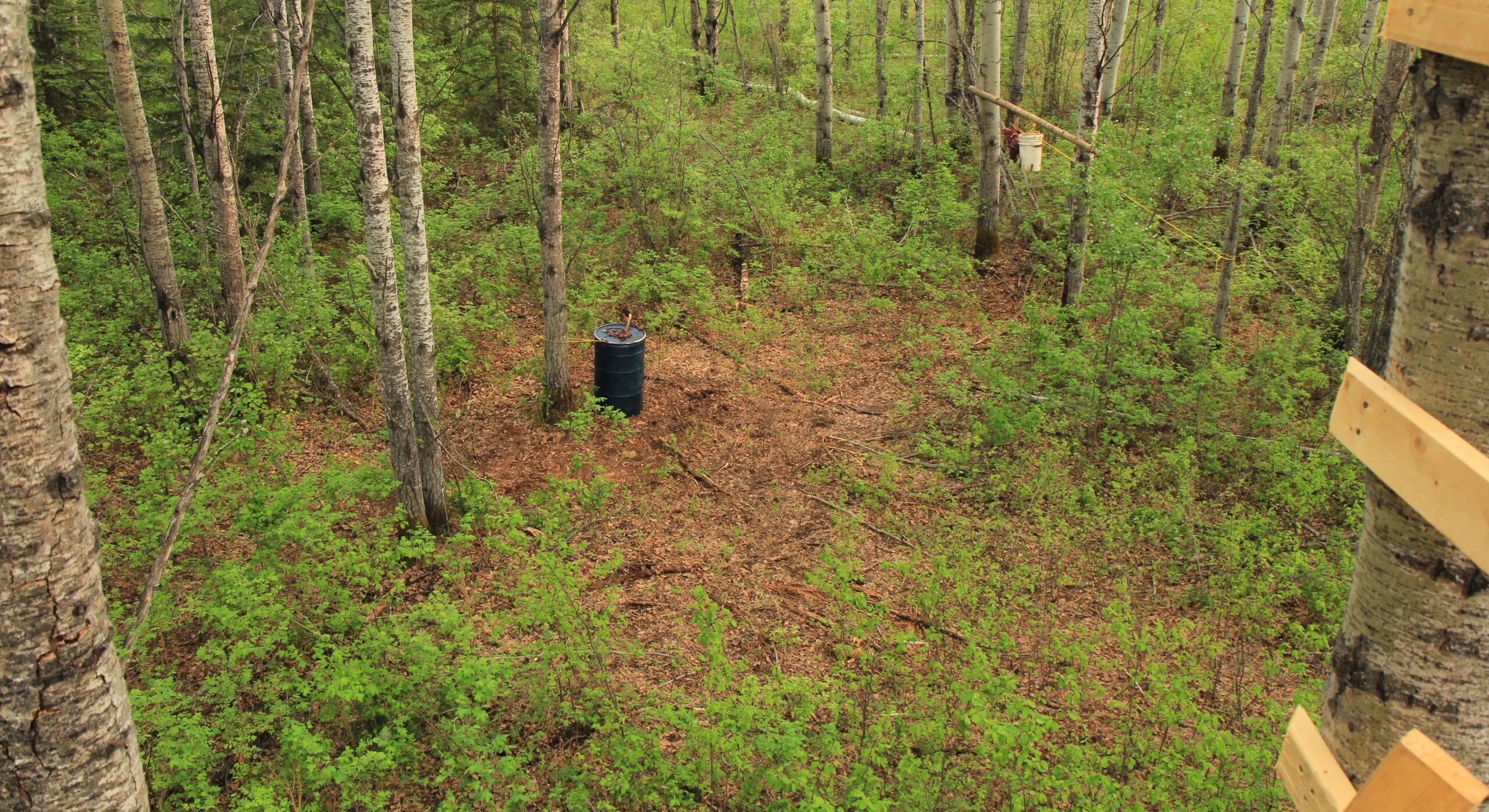
This Canada bear stand includes a barrel full of bait and a nearby beaver carcass
Black bears are apex predators, and bowhunting them provides a thrill that you just don’t get when hunting deer. While black bears generally fear humans, there’s no denying that they have the potential to be dangerous. Being within bow range of a big bear is exciting, and the result of a successful hunt is a great trophy and outstanding table fare, when cooked properly. Spring bear hunting is one of the best ways for a bowhunter to scratch the off-season itch for big game, too, since most hunting is done in May and June. If you’re itching to go on a bear hunt with your bow, here are some tactics you might want to try.
BAIT HUNTING
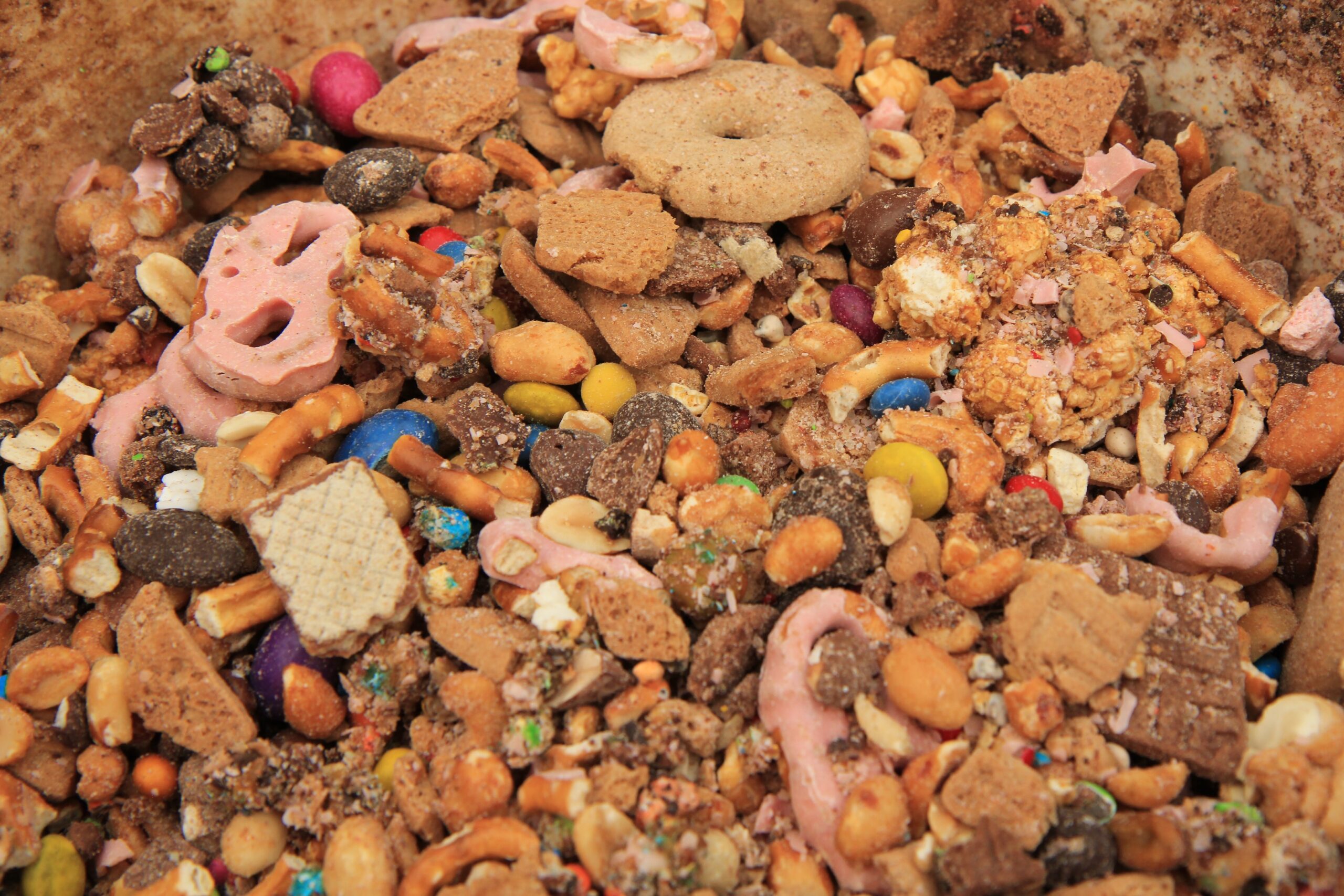
Most black bears have a sweet tooth. Good baits include mixtures of stale pastries, candy, and junk food.
Black bears are most commonly hunted over a bait site, which is legal in many places. The rules regarding what can and cannot be used for bait vary, but expired pastries, oats, granola, dog food, nuts, frosting, pie filling, peanut butter, and other sweat treats work well. Where meat and animal byproducts are legal, some bear hunters use beaver carcasses, fish, and bacon grease. Bait sites are often souped up to attract more bears with powerful attractants such as liquid smoke, anise scent, and other rank attractants.
When establishing a bait, choose a location near dark cover, as bears typically spend the warm midday hours in such haunts. But try to locate the bait and your ambush in somewhat of an opening where daylight will last until legal shooting light ends. Make sure that the prevailing wind direction is such that your treestand or ground blind will be downwind of the bait on most days. Also, set your stand or blind for a slam-dunk shot—about 10-20 yards is ideal. Black bears don’t have the best eyesight, so there’s no need to get high up a tree, which will needlessly complicate shot angles.
Bait certainly helps your odds, but it’s far from easy hunting. Mature bears catch on to the game very quickly, so if you don’t kill your target bear within the first few sits, your odds decline. Also, black bears habitually visit bait sites right before or after dark. To catch a big old bear in the daylight over a bait, especially in pressured areas, is a challenge. Some bear hunters eschew using trail cameras because the bears sometimes destroy them. Still, cameras, particularly cellular cameras, can provide decisive advantages. Timing your sits for when you see bears moving in the daylight can tilt the odds. It’s important to play the wind and be in the stand as much as you can, as new bears can show up at any time, particularly during the spring breeding season.
SPOTTING, STALKING, AND CALLING
What’s more thrilling than being 20 yards from a bear while hunting from a treestand? Trying to slip to within 20 yards of one on the ground ranks right up there. This tactic is primarily for Western black bear hunting, where open country provides opportunities for glassing but hunting over bait is often illegal. In Montana, for example, it’s possible to spot black bears roaming the grassy slopes and avalanche chutes in the spring, and then attempt a stalk. In British Columbia and parts of Alaska, bowhunters routinely stalk bears on the beaches in flatter country, or in logged areas at higher elevations. Stalking in conjunction with predator calling, such as fawn-in-distress sounds, can produce action-packed, close-range encounters.
Before approaching a black bear, you must have the wind to your advantage, as they have a keen sense of smell. Move when the bear is feeding, and halt when it lifts its head. Keep a low profile, but don’t dally on the stalk, as cover can swallow up your quarry almost instantly.
BROADHEADS AND SHOT PLACEMENT

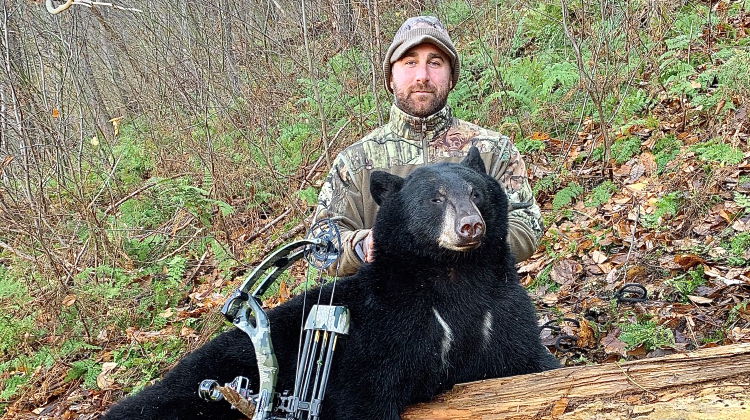
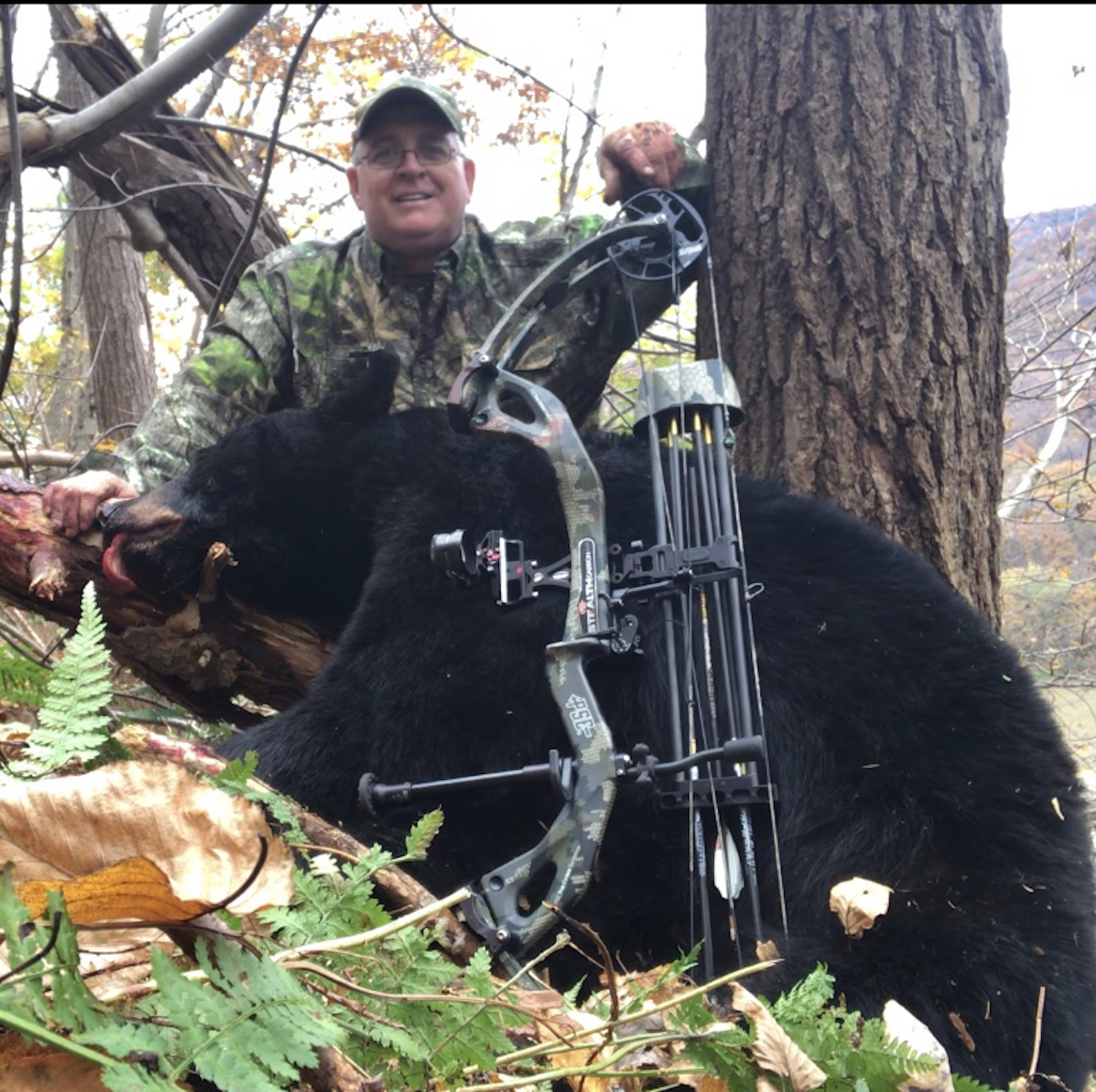
Happy Wasp Archery customers show off their trophy bears, taken with various Wasp broadheads.
It doesn’t take a stout setup to kill even a huge black bear, but check draw weight minimums in the state or province you’re hunting. Black bear hunting over bait is especially popular with many traditional bowhunters because of the close-range shot opportunities. Those hunters will want a heavy, shaving-sharp broadhead such as the Sharpshooter 150 or 200, or the new Sharpshooter CBW.
Compound shooters drawing lighter weights can’t go wrong with sharp fixed-blades like the Havalon HV or Mortem, but compact mechanicals like the Jak-Hammer 1 1/4” 3-Blade are a great choice as well. Hunters shooting heavy setups over 70 pounds and crossbow shooters have more latitude to choose large mechanicals such as the Z-Force or Jak-Knife.
Regardless, there’s no substitute for perfect shot placement on bears. A common flaw is aiming too low, especially when hunting from an elevated perch. A bear’s lungs sit higher and farther forward than most think. Another common issue is hitting too far back or high in the shoulder. The best shot on a broadside bear is about 2 inches behind the shoulder crease at mid-height. Quartering-away shots are great; just aim for an exit wound on the opposite-side shoulder. Avoid quartering-to shots, as these usually result in one-lung hits and potentially dangerous tracking situations for a wounded bear. Frontal shots are OK with powerful setups, but only when hunting from the ground and at very close range. The kill zone is very small, and the bear’s head must be lifted high enough to expose the goods. In most cases, bowhunters should wait for a different angle.
— Story by Wasp Archery staff; live bear photo by John Hafner
View All Posts